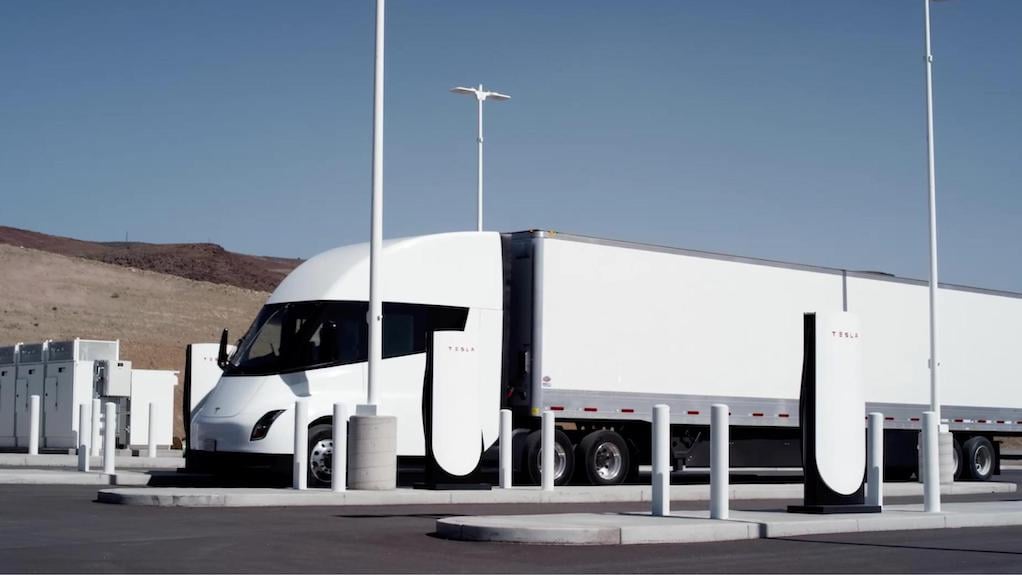In this article, you'll learn:
- How technological advancements are reshaping warehouse space requirements.
- The rising demand for Class A warehouses and its effect on rental rates.
- The increasing importance of EV infrastructure and green practices.
- How to stay ahead in the evolving warehouse market with expert tenant representation.
As the commercial real estate landscape continues to evolve, warehouses are at the forefront of a technological revolution. And just as the leasing dynamics of the office market are being driven by a flight-to-quality, so is the industrial space.
This transformation is redefining the standards for warehouse spaces, and businesses are prioritizing modern, high-quality facilities that integrate advanced technologies to optimize efficiency and sustainability. Corporate tenants have new priorities across the board and warehouses of the past will no longer cut it as rapid technological evolution is domineering the demand for manufacturing space.
So, let’s explore the changing priorities for warehouse and manufacturing facilities and how commercial tenants can get ahead of the trends to position themselves for success.
Technology is the New Standard
The evolution of warehouses is poised to become increasingly intertwined with highly efficient technology, driven by the proliferation of smart devices and the growing reliance on the internet.
This shift is expected to shape the demand for data centers, tech-focused commercial properties, and tech-enabled warehouses.

And going forward, this demand for other tech-focused commercial properties and tech-enabled warehouses will undoubtedly continue. These properties are designed and equipped to accommodate the integration of advanced technologies such as automation, robotics, artificial intelligence, and machine learning. Tech-enabled warehouses leverage cutting-edge technologies to enhance operational efficiency, optimize inventory management, and improve overall supply chain performance.
Demand for Class A
So the facilities that can accommodate the technological revolution are witnessing the brunt of the demand, accounting for a substantial 68.5% of signed industrial leases.
And this emphasis on Class A properties has had a direct effect on average rental rates in the market. As anticipated, the average asking rates for leased warehouse spaces have experienced a notable increase because while there has been a dip in overall leasing activity, the higher concentration of leases being signed for Class A properties has driven up the average rental prices observed in the market.
Because as businesses prioritize efficiency, advanced technology, and strategic location advantages, they are willing to pay more for buildings that meet these needs rather invest in the buildout and upgrade of existing facilities.
Consequently, this focus on premium properties has also led to a relative devaluation of other warehouse classes, such as Class B and Class C properties. The increasing demand for Class A spaces has created a disparity in rental rates between different property classes, further highlighting the preference for modern, high-quality warehouse facilities.
And this represents a somewhat complicated disconnect because 82% of all logistics facilities in the U.S. today were built before 2000.
|
“The way these occupiers are utilizing facilities today are extraordinarily different than they utilized them two decades ago. You need to have stronger floor slabs, you need to have higher clear heights, you need to have greater roof load capacity for solar installation. We need to bring more power to these facilities to run the truck loads that are coming.” -BisNow |
So, there is a squeeze for the right properties as every tenant puts emphasis on premium, technologically capable facilities. And going forward, what everyone seems to agree on is that you can’t achieve this without building out your facility to accommodate Electronic Vehicles (EVs).
EV Accessible Warehouses
Going forward, corporate manufacturing tenants everywhere should be prepared for the ubiquity of EVs. It’s already been asserted that offices and corporate spaces should include EV chargers. Now, the push is moving on to the warehouse industry.
While the capability didn’t exist before now, Electric Semi-trucks are set to be the new future of industrial productivity and sustainability.

Not only this, but it will change the scope of warehouse power entirely. If, more like when, electronic trucks take over for diesel, facilities will need the infrastructure to support them. This raises a whole new world of considerations for corporate tenants like who would be responsible for build-out, maintenance, and the sheer cost of running the extreme power required.
|
“If you have 20 semi-trucks charging all at one time, that’s almost the amount of power it would take to power 20 big box stores. Think of that kind of scale.” -Neha Palmer, CEO of Terawatt |
Accommodating that kind of power is a massive job. But since EVs are appearing increasingly as the future of efficient and carbon-neutral logistics, businesses are making it a priority. In fact, along with increasing technological capability, EVs are a central consideration in the way that industrial tenants are planning to layout and run their facilities.
“Industrial developers are looking at how to center electric vehicles’ presence when designing spaces, changing both the physical setup for parking areas and reconfiguring power ahead of time to make sure facilities can get enough electricity to charge vehicle fleets," according to BisNow.
Of course, developers are attempting to quickly and efficiently phase in EV’s. Because, they may have no other option to do so. New laws that crack down on corporate carbon emissions are slated at trucking and logistics and switching over to EV’s is a significant tactic to reduce a central contributor of an organization’s overall carbon footprint.

Because despite comprising a relatively small portion of the vehicles on the road, trucks are responsible for a vast majority of the carcinogenic diesel particulate matter emitted. As a result, power for alternative vehicle fleets is becoming a top priority.
|
“Power is definitely the new parking…The single greatest amenity going forward in the logistics environment is going to be the availability of power.” -BisNow |
Green Equipped Facilities
The commercial real estate industry in general has already been victim to a growing slate of environmentally conscious regulations. There is an all-around push to carbon neutrality, and this can’t be achieved without the role that trucks play.
Of course, this in turn has turned warehouse tenants to prioritize green and sustainable commercial properties. As ESG initiatives gain momentum, businesses are seeking eco-friendly solutions in their operations because if they don't they might ace serious fines. This translates into a rising demand for warehouses that incorporate energy-efficient designs, renewable energy sources, waste reduction strategies, and environmentally conscious materials and practices.
As a result, developers and investors are increasingly integrating ESG principles into warehouse design, construction, and management practices. And this is sure to ramp up just as the legislature does.
For example, the California Air Resources Board is looking to close the state’s borders to diesel trucks by the year 2035. And according to Craig Fuller, CEO FreightWaves, “California is the epicenter of North American import and export supply chain. So, if California forces the industry to go carbon neutral and eliminate the internal combustion engine, automotive manufacturers have zero recourse against that.”
The trend will continue in warehouse space as other states including New Jersey also adopt somewhat aggressive approaches to de-carbonize the CRE industry.
New Jersey has introduced legislation that requires 40% of the roofs to be solar-ready for industrial projects. Going forward, this is something we may see more often.
So, the takeaway to remember is that the new priorities for warehouse space will continue to be:
- Technologically capable
- Environmentally- driven
- Accommodating massive power sources
What Warehouse Tenants Should Know
Positioning yourself and your warehouse for success means staying on top of market trends. For busy tenants, constantly evaluating their leases in conjunction with the market can be an impossible task. This is especially true since the technological evolution appears to be getting more rapid by the day.
Luckily, The True Tenant Reps™ at iOptimize Realty® can keep track for you. As experts in conducting due diligence for optimal warehouse properties, we have 30+ years of experience finding the best warehouses for the best price. Now, we see where the future of warehouse is going and want to help corporate tenants stay ahead of the curb. EV's will only likely become more important in your commercial real estate. But, when looking for your optimal warehouse, there's a lot more considerations.
We want to share the tips and tricks we've developed to empower corporate tenants to find the best warehouse for the best price. We poured our industrial real estate due diligence into the course and you'll also receive a checklist of the 70+ factors you need to consider when touring a warehouse. Enroll now.








